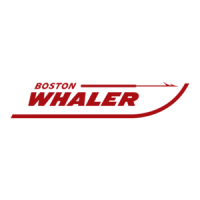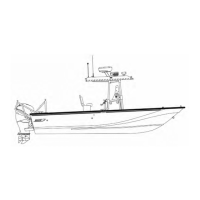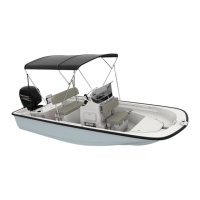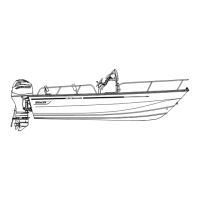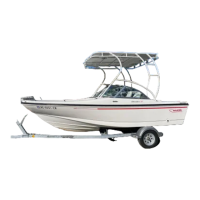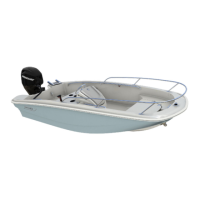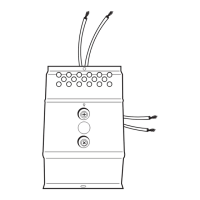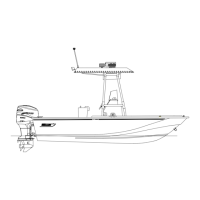
Do you have a question about the Boston Whaler 19 Guardian Series and is the answer not in the manual?
| Brand | Boston Whaler |
|---|---|
| Model | 19 Guardian Series |
| Category | Boat |
| Language | English |
Introduces hazard notification levels and defines signal words.
General guidelines for safe boat operation and user duties.
Information on PFD types, accessibility, and proper use.
Dangers of carbon monoxide and precautions for ventilation.
Extinguisher types, use, fire prevention and handling.
Severe weather precautions and assisting distressed boaters.
Capacity limits, safe loading, and capsizing procedures.
Preventing swamping and rules for diving operations.
Chemical warnings and deck safety guidance.
Identification and explanation of various warning labels on the boat.
A comprehensive list of checks before each trip.
Operation of emergency shutoff and engine ignition switches.
Step-by-step checklist for starting the outboard engine.
Operation of the single-lever control for shifting and speed.
Adjusting engine trim for acceleration, performance, and visibility.
Overview of dash-mounted gauges and their functions.
Functions of tachometer, hour meter, and fuel gauge.
Gauges for engine cooling pressure and battery voltage.
Trim gauge function and propeller information.
Skill requirements and steering wheel control for maneuvering.
Guidelines for placing and securing loads for safety and performance.
Operation and benefits of using trim tabs for boat attitude.
Checklist for safely shutting down the boat after use.
Information on towing the boat, checklists, and guidelines.
Safety warnings and procedures for lifting and slinging the boat.
Critical warnings regarding fuel leaks, fire, and explosions.
Overview of fuel system parts and the bonding system.
Labeled diagrams showing fuel system and access plate components.
Safe guidelines for refueling and avoiding static discharge.
Fuel gauge operation and procedures for fill/vent hose replacement.
Handling contaminated fuel and maintaining the fuel filter.
Information on using ethanol-blended fuels and storage.
Identification of console controls and the hydraulic steering system.
Operating the steering wheel for forward and reverse maneuvers.
Operation and importance of navigation lights for safety.
Use of docking lights and overview of the bilge pump system.
Bilge pump operation modes and routine maintenance.
Using trim tabs for boat attitude and proper trim.
Information on compass operation, deviation, and variation.
Emergency switch to connect batteries for starting assistance.
Console dome light and optional cockpit lighting.
Operation of optional siren, strobe light, and floodlights.
Description of the 12 VDC system and wiring.
Warnings and precautions for battery handling and storage.
Types of marine batteries and their periodic maintenance.
How the engine alternator and shore power charge batteries.
Detailed operation of the emergency battery parallel switch.
Operation of switches for engine and electronics power control.
Definition and purpose of grounding and bonding systems.
Overview of the six main DC power distribution circuits.
Power distribution and functions of panel, fuse blocks.
Power distribution and circuit breakers for electronics.
Technical specifications for the boat, including dimensions and capacities.
Location and importance of the HIN for boat identification.
Importance of hull preservation, washing, and waxing.
Repairing hull damage and preventing blistering.
Maintenance for trim, hardware, drains, and scuppers.
Maintenance of hull features and bottom painting process.
Inspecting fuel tanks, hoses, and using fuel stabilizers.
Checking steering system operation and fluid levels.
List of approved fluids for the Sea Star II steering system.
Battery maintenance, cleaning, and off-season storage.
Protecting the outboard engine from freeze damage and corrosion.
